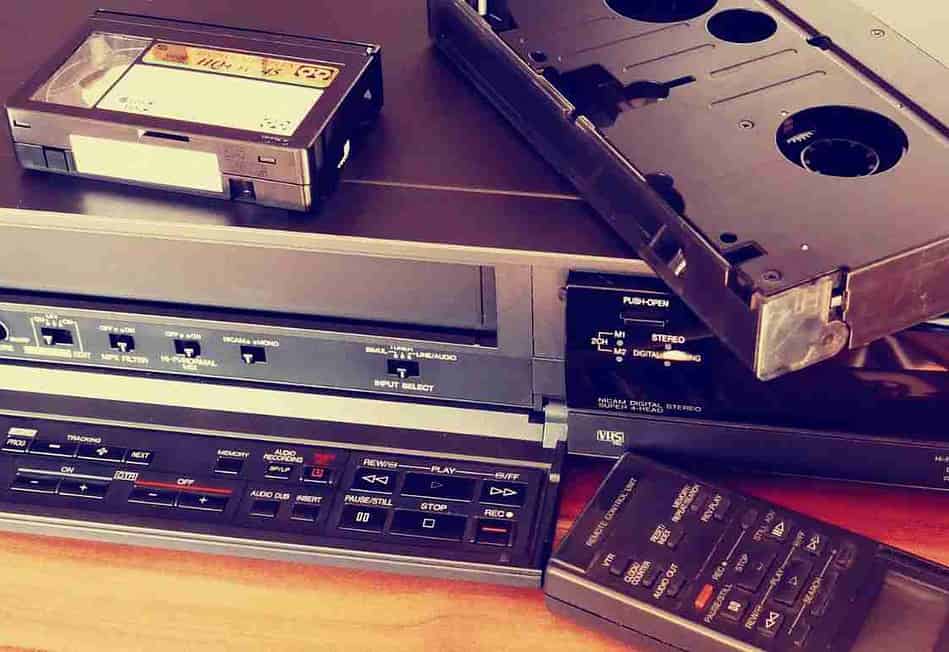The Best Fluffy Pancakes recipe you will fall in love with. Full of tips and tricks to help you make the best pancakes.
Suppose you’re feeling nostalgic and want to relive the magic of the 80s and 90s, dust off your old VHS tapes, and enjoy some classic movies. Or, if you’re ready to embrace the future of home entertainment, check out the latest streaming services and enjoy a world of content at your fingertips.
Explore More Home Entertainment Options
At one point, the VHS tape was the king of home entertainment. It revolutionized how we watched movies, and it seemed like nothing could ever replace it. However, with the advent of DVDs, Blu-rays, and digital streaming, the VHS tape has fallen from grace. Therefore I would like to journey through the history of the VHS tape, exploring its rise to dominance and its eventual fall from grace.
The Birth of the VHS Tape
The VHS tape was first introduced in Japan in 1976 by the Victor Company of Japan, Ltd. (JVC). It quickly gained popularity in Japan and soon made its way to the United States. The first VHS player was introduced in the US by JVC in 1977. At this point, the VHS tape competed with the Betamax tape, which was introduced by Sony in 1975. However, the VHS tape quickly gained the upper hand due to its longer recording time and cheaper cost.
The Rise of the VHS Tape
Throughout the 1980s and 1990s, the VHS tape became the standard for home entertainment. It allowed people to record their favorite TV shows and movies and rent or buy tapes at home. The VHS tape also allowed for creation of home video libraries, which became a popular trend. Movie studios saw the potential of the VHS tape and started releasing movies on video. This allowed people to watch movies at home instead of going to the theater. This shift in the movie industry led to increased sales of VHS tapes.
The Fall of the VHS Tape
The rise of DVDs in the late 1990s marked the beginning of the end for the VHS tape. DVDs offered better picture and sound quality than VHS tapes, and they were smaller and easier to store. In addition, DVDs could hold more content, including bonus features and commentary. The convenience of DVDs made them a popular choice for consumers, and sales of VHS tapes began to decline.
The Digital Revolution
The rise of digital streaming in the 21st century was the final nail in the coffin for the VHS tape. Digital streaming offered instant access to movies and TV shows without physical media. This convenience made digital streaming the preferred home entertainment method for many people. The popularity of digital streaming services like Netflix and Hulu has led to video rental stores’ demise and physical media sales’ decline.
The Legacy of the VHS Tape
Although the VHS tape is no longer the king of home entertainment, it still holds a special place in the hearts of many people. The VHS tape was a childhood staple for those who grew up in the 1980s and 1990s. The rise and fall of the VHS tape is a reminder of how technology is constantly evolving and how we must adapt to these changes. The VHS tape may no longer be the dominant form of home entertainment, but its legacy still lives on. The future of home entertainment is uncertain, but it’s safe to say that physical media like VHS tapes are unlikely to make a comeback. Nevertheless, the VHS tape will remain essential to home entertainment history, and its legacy will continue.
Did you know that the longest movie ever released on VHS was the experimental film “The Cure for Insomnia”? Clocking in at a staggering 87 hours, this movie holds the record for the longest ever released on VHS. It’s definitely not a movie for the faint of heart!
Why the 80s was the best
The 80s was a decade of significant technological advancements, significantly impacting the entertainment industry. It was the decade when the VHS tape became the dominant home entertainment format, allowing people to enjoy movies and TV shows from the comfort of their homes. The rise of video rental stores and home video libraries meant that people had access to a wider variety of content than ever before. The 80s was also a decade of creativity and experimentation in the film industry, with many classic movies being released on VHS during this time. It’s no wonder many people look back on the 80s as the golden age of home entertainment.
In closing
The rise and fall of VHS tapes is a fascinating journey through the history of home entertainment. From its introduction in the 1970s to its dominance in the 80s and 90s, the VHS tape revolutionized the way we watch movies and TV shows. However, the advent of new technologies like DVDs and digital streaming led to its eventual demise. Despite this, the VHS tape remains an important part of pop culture history, and it holds a special place in the hearts of those who grew up with it. The legacy of the VHS tape is a reminder of how technology is constantly evolving and how we must adapt to these changes. It will always be remembered as a game-changer in the world of home entertainment.
FAQs
Q: Why did VHS tapes become so popular in the 1980s?
A: VHS tapes became popular due to their affordability, longer recording times compared to rival formats, and the convenience of watching movies at home.
Q: What were some of the drawbacks of the VHS format?
A: The main drawbacks of VHS were its lower picture and sound quality compared to later formats and its susceptibility to wear and damage over time.
Q: What ultimately led to the decline of VHS tapes?
A: The introduction of DVDs and digital streaming services, which offered better picture and sound quality, ultimately led to the decline of VHS tapes.
Q: Are VHS tapes still produced today?
A: VHS tapes are no longer produced, with the last known VHS tape manufactured in 2008.
Q: Why have some people started collecting VHS tapes again?
A: VHS tapes have experienced a resurgence in popularity due to nostalgia and the desire to collect rare or obscure titles that may not be available in other formats.
Suppose you’re feeling nostalgic and want to relive the magic of the 80s and 90s, dust off your old VHS tapes, and enjoy some classic movies. Or, if you’re ready to embrace the future of home entertainment, check out the latest streaming services and enjoy a world of content at your fingertips.





